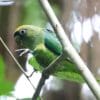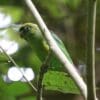Scarlet-shouldered Parrotlet
Also known as:
Red-winged Parrotlet, Huet's Parrotlet
Also known as:
Red-winged Parrotlet, Huet's Parrotlet
DID YOU KNOW?
Whole flocks of Scarlet-shoulded Parrotlets can suddenly appear in trees, as if out of nowhere.

Touit

huetii
Size:
16 cm (6.2 in)
Weight:
60 g (2.1 oz)
Subspecies including nominate:
one
Colour Adult:
Male-underparts with green and yellow; blue/black face, turning to deep blue on forecheeks; pale olive/brown ear coverts and crown; dull blue thighs; yellow undertail coverts; scarlet bend of wing, underwing coverts and axillary feathers; green central tail feathers widely tipped with black; side tail feathers dark red tipped with black. Beak olive/yellow with grey at base. Eye-ring prominent and bare, and white. Eye dark brown. Female-green/yellow lateral tail feathers with black tips.
Colour Juvenile:
As in adult female but blue/black on forehead and lores absent.
Call:
Calls made in flight are two-syllable tweeting notes; also nasal, whining notes repeated often.
Content Sources:
CITES
BirdLife International
Cornell Lab of Ornithology/Birds of the World
Parrots: A Guide to Parrots of the World, Juniper and Parr, 1998
Parrots of the World, Forshaw, 2006. 2010 edition
Lexicon of Parrots, Thomas Arndt.
Captive Status:
Not found in captivity.
Longevity:
—
Housing:
—
Diet:
—
Enrichment:
—
Nest Box Size:
—
Clutch Size:
Not recorded.
Fledging Age:
—
Hatch Weight:
—
Peak Weight:
—
Weaning Weight:
—
World Population:
Unknown but described as uncommon and patchily distributed. Decreasing.
IUCN Red List Status:
Least Concern
CITES Listing:
Appendix II
Threat Summary:
Uncommon to rare it is also shy and remote, so it may be more common than records indicate. It may also move from area to area, making sightings more infrequent. Recently discovered within two protected areas in N Pará, Brazil where it was not previously seen. Within its range, 6% of tree cover is lost over three generations. The species is restricted to humid forests, and therefore the rate of population decline may be higher than tree cover loss alone suggests, as forests are being degraded. The impact of trapping has not been quantified but is described as low. Based on available evidence, the rate of population decline is unlikely to exceed 10% over three generations.
Range:
Scattered throughout Amazonia, from N Guyana, NE and S Venezuela and S Colombia to N Bolivia. Also in N Brazil south of Amazon River. Possibly in French Guiana and Trinidad.
Habitat:
Seen up to 1200 m (3936 ft) in lowland humid forest and forest edge, and understorey. Found chiefly in terra firme forest but also varzea.
Wild Diet:
Fruits, seeds, berries and small nuts.
Ecology and Behaviour:
Is gregarious, sometimes seen in large flocks. Nests communally in dense foliage of upper tree crown.
Clutch and Egg Size:
Not recorded.
Breeding Season:
April, S Venezuela; September-December, Brazil.
Related Links:
—
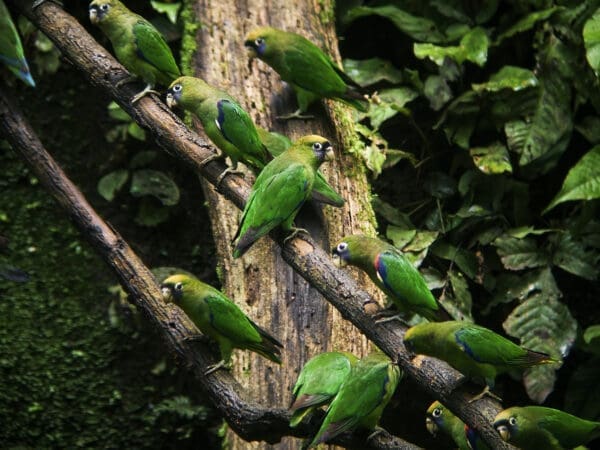

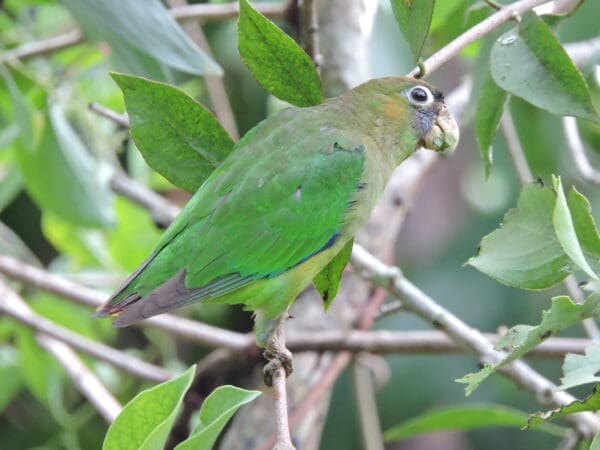
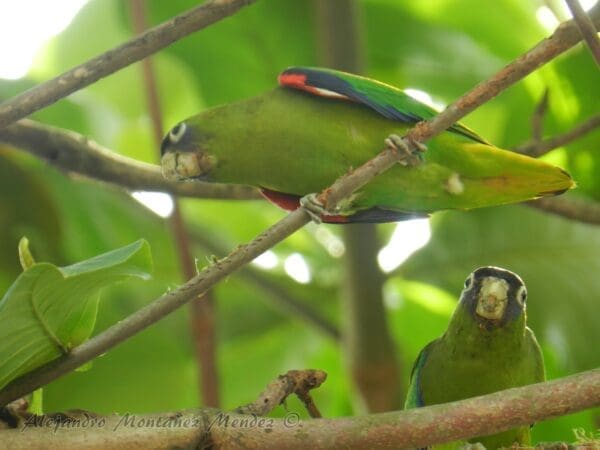

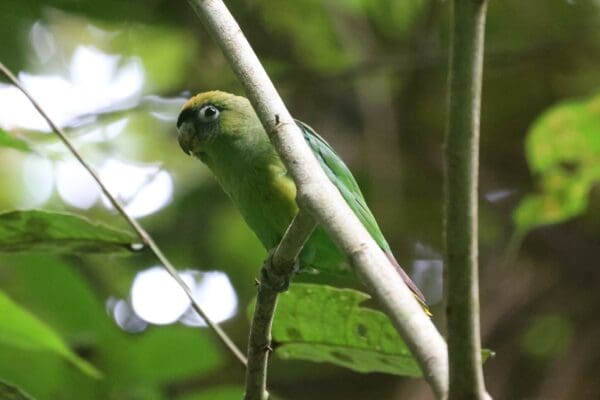
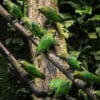

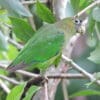
![© Jaime Alejandro Montañez [CC BY 2.0] via Flickr Wild Scarlet-shouldered Parrotlets perch in a tree](https://parrots.org/wp-content/uploads/1990/11/Scarlet-shouldered-Parrotlet-lg-Jaime-Alejandro-100x100.jpg)
